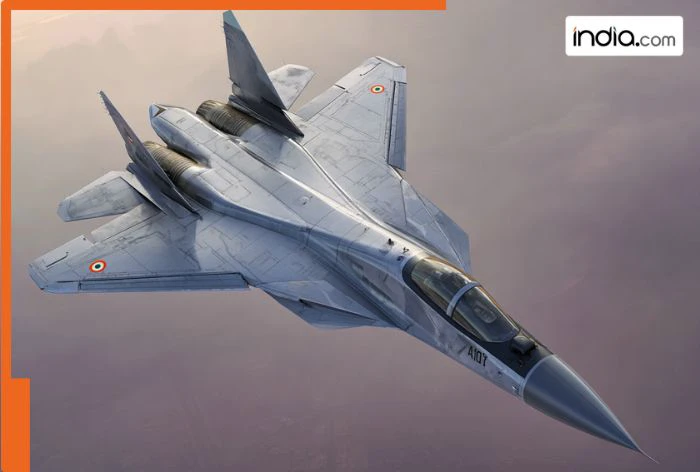India’s indigenous fifth-generation fighter jet, the Advanced Medium Combat Aircraft (AMCA), is being developed in two stages: AMCA Mark-1 (Mk1) and AMCA Mark-2 (Mk2).
The Mk1 version will not include some of the most advanced systems like the Distributed Aperture System (DAS), which provides all-around situational awareness. However, it will still be recognised as a true fifth-generation fighter, thanks to its stealth design, advanced avionics, and internal weapons bay.
The Mk2 version, on the other hand, will feature all the next-generation systems missing in the first model. It will include DAS, advanced electronic warfare tools, and powerful sensor fusion technology, giving it 5.5th-generation capabilities, a big step beyond the standard fifth-generation level. These features will make the aircraft not only harder to detect by radar but also give the pilot a 360-degree view of the battlefield.
Why AMCA Mark-1 is considered a 5th-generation fighter
The AMCA Mark-1 qualifies as a fifth-generation fighter jet because it meets the four essential “S” features that define this class of aircraft:
- The jet’s design focuses on low radar visibility. It uses advanced shaping and Radar Absorbing Material (RAM) to minimize detection by enemy radars.
- AMCA Mk1 will be able to fly at supersonic speeds without using afterburners, allowing longer endurance and lower fuel consumption during combat missions.
- The aircraft can combine and process data from multiple sensors into one clear, unified picture for the pilot. This gives better awareness and quicker decision-making during battle.
- It will feature high-end avionics, flight control systems, and aerodynamic design that enable sharp maneuvers and superior handling in air combat.
AMCA Mark-2: India’s 5.5th-Generation fighter
The AMCA Mk2 will take a major technological leap, moving toward 5.5th-generation capabilities.
One of the biggest additions will be the Distributed Aperture System (DAS), a network of infrared sensors placed around the aircraft. These sensors give the pilot a 360-degree real-time thermal view of the surroundings, allowing them to detect missiles, aircraft, and other threats even through clouds.
The Mk2 will also make extensive use of Artificial Intelligence (AI). AI will process the vast amount of data coming from multiple sources: radar, DAS, and electronic warfare (EW) pods and present it in a simple way, helping the pilot focus on mission decisions instead of complex data analysis.
